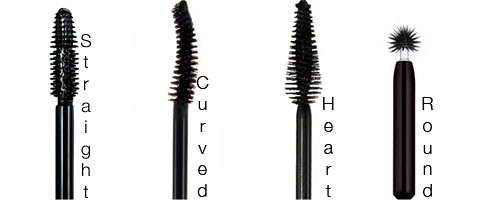Hi everyone,
Not all mascaras are created equal, and mascara wands are just as important as the actual formula inside the tube. With so many different shapes and sizes to choose from these days, it’s useful to know what each wand does. From big to small and combed to curved, this Beauty School post will go over a few of the key differences in wand anatomy to help you get the most out of your mascara.

Brush Shapes
- Straight wands: Most mascaras come with a standard straight wand. This is the basic shape and is the most natural to use.
- Curved brushes have the arc of your lashes and eye shape in mind, and are meant to give you an easy, all-over application.
- Heart-shaped brushes are a combination of the different shapes. They start out as standard brush heads, and taper in to form a narrower point at the end. This design is meant to give you precision when you need it, as well as a normal brush when you don’t.
- Round mascara heads are relatively new. The small, spherical shape is supposed to allow you to reach each and every lash easier than if you were using a larger brush.
Bristle Types
- Standard brush hairs are typically made out of synthetic fibers. These bristly hairs are good for voluminous application, especially when there are a lot of bristles in a single wand.
- Plastic, combed brush heads are good for separation and help you avoid those dreaded spidery lashes.
- Rubber-bristled wands have become really popular and are good for clump-free, voluminous lashes. Mascara tends to dry up less on these kinds of bristles since the formula slides on and off much easier, rather than getting trapped on brush hairs.
- Vibrating or oscillating mascaras may sound strange, but these are great for volume; they do a lot of the wiggling work for you, ensuring that your lashes are separated and evenly coated.
What type of mascara wand do you use? Have you tried all the ones on this list?

No comments:
Post a Comment